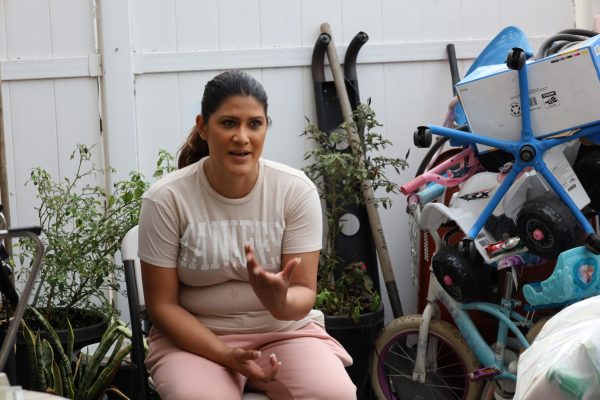
In the aftermath of the Supreme Court’s ruling in City of Grants Pass v. Johnson, which upheld the legality of bans on camping and sleeping in public spaces, cities across the United States have scrambled to implement policies that criminalize homelessness. While these measures might clear streets and sidewalks, they fail to address the root cause of homelessness, perpetuating cycles of poverty and displacement.
The illusion of progress created by encampment bans is fleeting and harmful. By prioritizing the eradication of visible homelessness over addressing its underlying causes, cities such as Newport Beach fail to resolve the issue, opting to obscure it from public view with limited and short-term efficacy.
This strategy does nothing to combat rising housing costs, healthcare affordability, stagnant poverty rates and widening wealth inequality. Between 2000 and 2022, fuel and utility costs rose by 115%, outpacing wages and leaving low-income families with less to meet their basic needs. Despite decades of technological, medical and environmental advancements, poverty rates remain stagnant. Anti-poverty programs have expanded, with per-person aid increasing from $1,015 under President Ronald Reagan to $3,014 under President Donald Trump. Much of this funding fails to reach those in need, with programs like Temporary Assistance for Needy Families (TANF) allocating only 22 cents of every dollar directly to low-income individuals.
For insight into the lived realities of these bans, I spoke to three people who previously experienced homelessness: Zuprimna, Clark and Marcus. The Bolt is withholding their last names for safety concerns. Their experiences paint a sobering picture.
“The encampment ban doesn’t solve anything,” Zuprimna said. “It just moves us out of your sight. But the problems—lack of housing, jobs, and healthcare—are still there.”
“Just because you don’t see us, doesn’t mean we’re not there,” Marcus said.
The data supports their concerns with 90% of those displaced by encampment bans returning to the streets, often with criminal records that further entrench their homelessness, said Chris Herring, assistant professor of sociology at UCLA.
Allen Burnett, a spokesman for the Costa Mesa nonprofit Project Hope Alliance, said bans “address symptoms, not causes, simply putting a band-aid on the problem” and create barriers to housing and jobs.
Newport Beach, internationally known for its affluent neighborhoods, yacht community and picturesque coastline, provides a case study of how systemic issues exacerbate homelessness. Single-family zoning dominates the city’s landscape, severely limiting development of affordable housing and subsidized units. As a result, those in need face daunting challenges: long waiting lists for housing assistance and a lack of affordable options even when they qualify.
According to local advocates, it can take years for individuals to secure housing, leaving many trapped in a cycle of instability.
Adding to the problem is a lack of awareness and accessibility. Many homeless individuals are unaware of how to access resources or navigate complex systems to secure housing or social services.
“It’s not just about waiting in line—it’s about knowing the line exists in the first place,” said Marcus, a formerly unhoused individual. This gap in resource accessibility further marginalizes an already vulnerable population, making it even harder to transition out of homelessness.
Gov. Gavin Newsom signed for $1 million in state support clear encampments, emboldening local officials to implement stricter policies aimed at reducing visible homelessness. Newport Beach recently reported a decline in its homeless population from 70 to 11, but 58 individuals were jailed for violating the ban, Homeless Services Manager Natalie Basmaciyan said. When these individuals are released, typically within a year, they are likely to return to the streets, perpetuating the cycle of homelessness without addressing the systemic barriers that keep them there.
These barriers are exacerbated by a growing wealth gap. The top 10% of households by wealth hold 67% of the nation’s total wealth, while the bottom 50% hold just 2.5%. Rising economic inequality creates environments where poverty persists, as policies increasingly prioritize the subsidization of affluence over the alleviation of hardship. Newport Beach’s zoning laws, for example, not only restrict affordable housing development but foster economic exclusivity, forcing low-income residents to bear the brunt of rising housing costs and limited resources.
Homelessness is far more complex than the presence of encampments. It includes those living in cars, cycling through temporary accommodations, or teetering on the brink of eviction. Modern homelessness, which escalated during the Reagan administration due to deinstitutionalization and housing budget cuts, remains deeply intertwined with NIMBYism, mental healthcare and economic inequality.
However, one solution has consistently proven effective: fostering genuine human connection between residents and the homeless. What often proves transformative is the power of individual connections, which ignites collective action and drives systemic change. These connections transform compassion into tangible solutions, building the foundation for progress.
Until policymakers prioritize sustainable solutions, encampment bans will remain an empty gesture—hiding poverty from sight without resolving its root causes. Homelessness isn’t just about living on the streets; it’s a systemic failure that denies individuals stability, dignity and opportunity. As cities enforce encampment bans, it’s worth asking: Are we addressing homelessness, or are we concealing it? The answer, for now, remains painfully clear.




